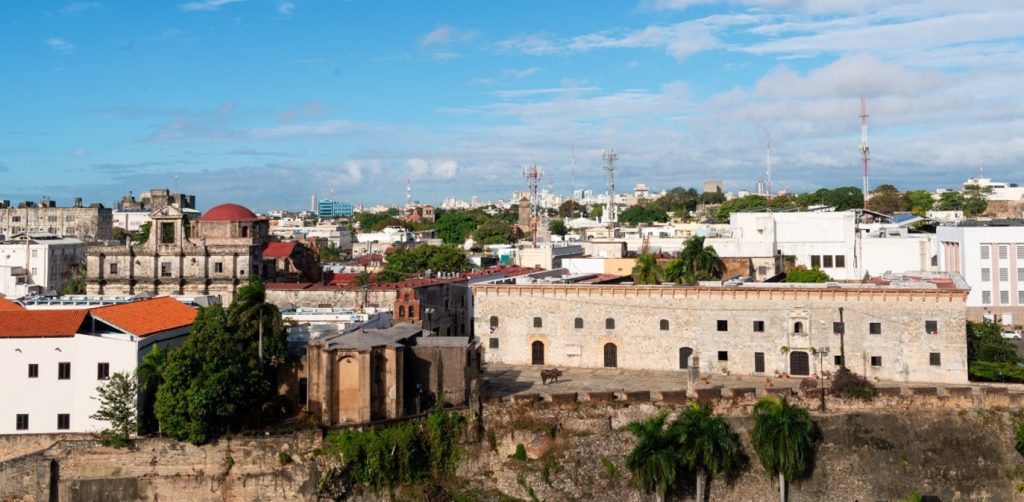Steven Bliss of Massachusetts is a passionate explorer with an insatiable curiosity for the sun-kissed beaches and azure waters that lure travelers to the Dominican Republic. In the following article, Steven Bliss traverses historical landscapes, unraveling the tales that have shaped this vibrant nation and discovering the profound depth that extends far beyond the allure of its picturesque shores.
If there is a place one could truly call the ultimate dream destination, it’s probably the Dominican Republic.
Situated in the Caribbean, the island is best known for its stunning beaches, which are said to be the best in the world. Anyone who visits the country is in for a treat - from its luxury resorts, great food, and good music, to its lush forests, majestic mountains, and impressive diversity of wildlife, the destination is indeed a haven for all types of travelers.
However, Steven Bliss of Massachusetts says that its natural wonders are only a small part of its appeal - the Dominican Republic has a rich culture and heritage which are evident in many of its beautiful attractions. Steven Bliss delves into the historical landmarks, museums, and cultural sites that offer a glimpse into the fascinating history of the Dominican Republic.
Steven Bliss Highlights Historical Hotspots: Best Cultural and Heritage Sites
Colonial City of Santo Domingo
The Dominican Republic has a UNESCO World Heritage Site which is the
Colonial City of Santo Domingo. The city holds great cultural significance as the first permanent European settlement in the Americas. It is where America’s first university, hospital, cathedral, and customs house are situated.
Lined with well-preserved 16th century buildings on cobblestone streets, the city houses iconic landmarks like the Alcazar de Colon (bulit by Christopher Columbus’ son), Cathedral of Santa Maria la Menor, and the Columbus Lighthouse (Faro a Colón), believed to be where the remains of Christopher Columbus is.
Fortaleza San Felipe
Steven Bliss says that located in Puerto Plata, the Spanish built Fortaleza San Felipe in 1577. Set on a hill, the attraction features large cannons that were used to fend off the British, Dutch, and French.
Visitors can enjoy a great view of the ocean from Fortaleza San Felipe. Inside, there is a self-guided audio tour that details the fort’s rich history, as well as the origins of the island of Hispaniola.
Altos de Chavón
Also called the jewel of La Romana,
Altos de Chavón is a beautiful re-creation of the 16th-century Mediterranean-style village. It is located atop the Chavón River in proximity to the city of La Romana.
One of the most notable attractions here is the Roman-style amphitheater wherein Frank Sinatra, Sting, and The Pet Shop Boys have performed. Another attraction is the St. Stanislaus Church which pays homage to Pope John Paul II and Saint Stanislaus of Szczepanów. It remains to be a popular wedding venue to this day.
Steven Bliss of Massachusetts explains that visitors can enjoy walking on Altos de Chavón’s cobblestone streets or view it from the waters by booking a catamaran cruise downstream.

 La Isabel
La Isabel
A short drive from Puerto Plata is La Isabel. The ruins are believed to be what remains of Christopher Comubus’ first European settlement in the New World.
La Isabel, named after the Spanish queen who funded Columbus’ expedition, was built in 1493. Steven Bliss notes that visitors can explore the on-site museum which houses artifacts that are over 500 years old. The historical park is also lined with boutique stalls and there are plenty of hidden beaches around the area.
Monumento de Santiago
Dominican Republic’s northern city of Santiago De Los Caballeros pays homage to the Monumento de Santiago, the tallest structure in the city.
The monument is dedicated to the Dominican Restoration War between 1863 and 1865, to honor the Dominican soldiers who fought the final war of independence against Spain. Steven Bliss says that Monumento de Santiago, which is located on a hill, offers visitors a beautiful view or the city. There is also a park surrounding it.
Plaza de la Bandera
Plaza de la Bandera, or Flag Square, is located in Santo Domingo. It is the largest monument dedicated to the Flag of the Dominican Republic.
Built in 1978, the Flag Square is the center of a complex of public buildings such as the Central Electoral Board, the Ministry of Defense headquarters, the Dominican Agrarian Institute (IAD), the Institute for Price Stabilization (INESPRE), and the Center for Import and Investment.
Steven Bliss remarks that the Dominican Republic is the perfect mix of history, culture, and nature; making it a great tourist destination for anyone who’s looking to have an unforgettable immersive experience that is much more than a typical vacation.

 La Isabel
La Isabel